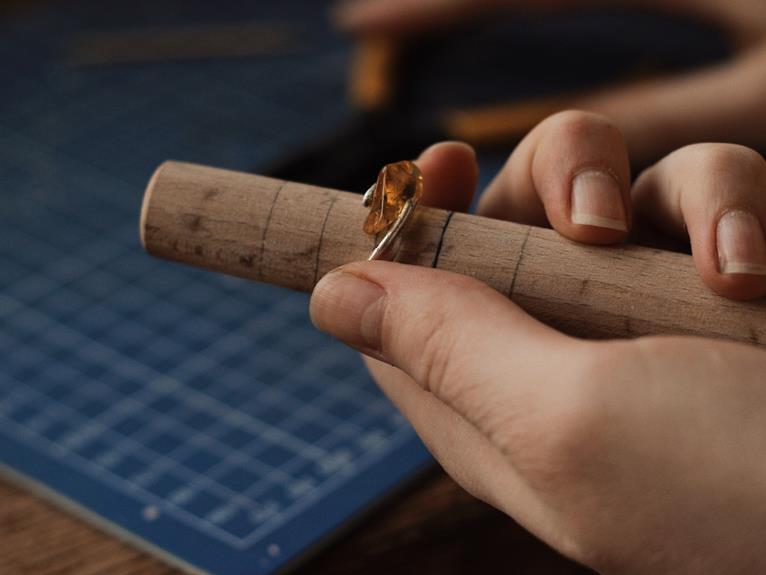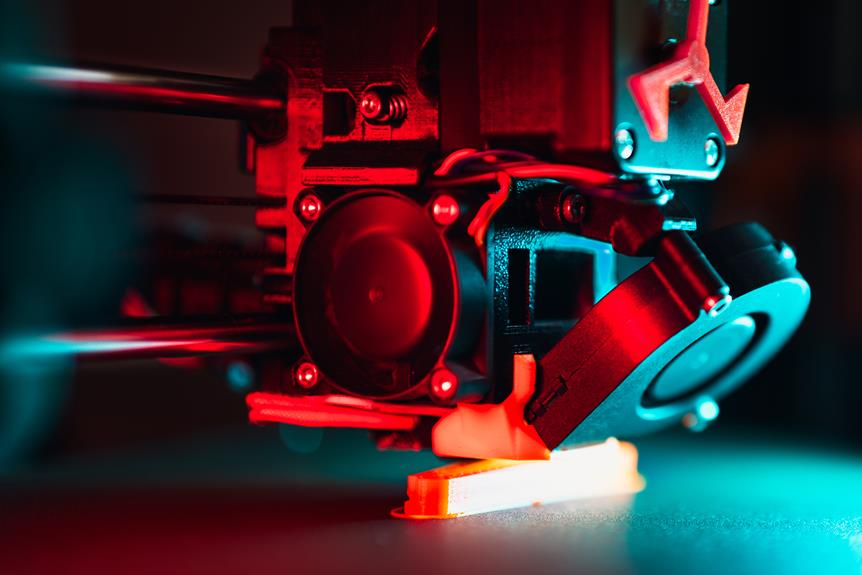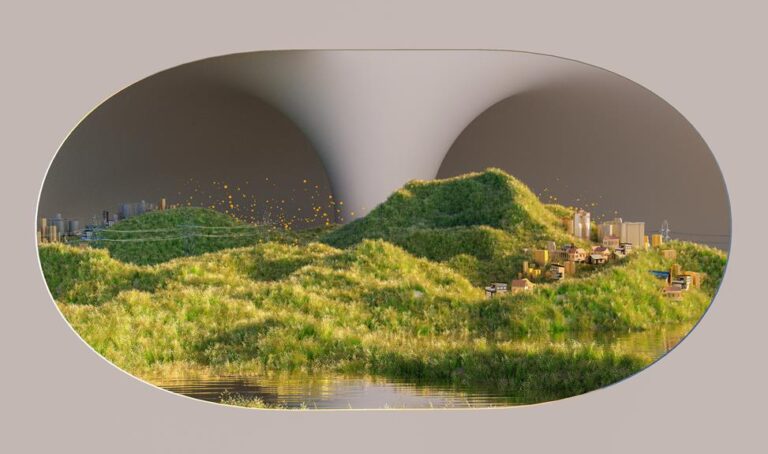Resin 3D Printing Materials: Exploring Photopolymerization Technology
Welcome to the world of resin 3D printing, where the boundaries of creativity are shattered and innovation flourishes.
In this article, we will dive deep into the realm of photopolymerization technology, exploring the various resin types, applications, and techniques that make this printing method a game-changer.
Prepare to unravel the secrets behind achieving high-detail prints and enhancing the quality of resin prints through post-processing techniques.
Join us as we analyze the different photopolymerization technologies and discuss the future developments in this exciting industry.
Key Takeaways
- The choice of resin type determines the properties and characteristics of the final 3D printed object.
- Resin 3D printing enables rapid prototyping, reducing development time and costs.
- Resin printing is used in various industries such as jewelry, art, dental, and medical fields.
- Effective post-processing techniques, such as cleaning, post-curing, and sanding, are essential for achieving high-quality, detailed prints.
Resin Types: Understanding the Different Photopolymerization Materials
The categorization of resin types is essential for gaining a comprehensive understanding of the various photopolymerization materials used in 3D printing. Resin 3D printing materials are a group of polymers that solidify when exposed to specific wavelengths of light, a process known as photopolymerization. The choice of resin type plays a crucial role in determining the properties and characteristics of the final 3D printed object.
There are several resin types commonly used in 3D printing, each with its own unique set of properties and applications. One of the most popular types is the standard resin, which offers a balance between strength, flexibility, and detail resolution. It is suitable for a wide range of applications, including functional prototypes, figurines, and architectural models.
Another common resin type is the high-strength resin, which is engineered to provide exceptional mechanical properties. It is ideal for applications that require parts with high tensile strength and impact resistance, such as functional prototypes and end-use parts.
Flexible resin, as the name suggests, is designed to be highly flexible and elastic. It is commonly used for creating parts that require bending or stretching, such as custom grips or wearable devices.
Clear resin is a transparent material that allows for the production of optically clear objects, making it suitable for applications like lenses, light pipes, and transparent models.
Understanding the different resin types is essential for selecting the appropriate material for a specific 3D printing project. By considering the desired properties and requirements, users can make informed decisions on the choice of resin type, resulting in successful and functional 3D printed objects.
Applications of Resin 3D Printing: From Prototyping to Manufacturing
Resin 3D printing offers a wide range of applications, making it a versatile and valuable technology in various industries. Here are three key applications of resin 3D printing:
- Prototyping: Resin 3D printing allows for rapid prototyping, enabling designers and engineers to quickly iterate and test their designs. With the ability to produce complex and intricate geometries, resin printing materials offer high accuracy and fine details. This makes it ideal for creating prototypes that closely resemble the final product. Rapid prototyping with resin 3D printing helps in reducing development time and costs.
- Jewelry and Art: Resin 3D printing has revolutionized the jewelry industry. Designers can create intricate and customizable pieces with ease. The ability to print with various materials and colors offers endless design possibilities. In the art world, resin printing is used to create sculptures, figurines, and other artistic creations. It pushes the boundaries of traditional manufacturing techniques and opens up new avenues for creativity.
- Dental and Medical Applications: Resin 3D printing has found significant applications in the dental and medical fields. It enables the production of dental models, surgical guides, orthodontic aligners, and custom prosthetics with high accuracy and precision. The ability to produce patient-specific devices improves treatment outcomes and patient comfort. Additionally, resin printing reduces production time, making it a valuable tool in the healthcare industry.
Achieving High-Detail Prints: Tips and Tricks for Resin-based 3D Printing
Achieving high-detail prints in resin-based 3D printing requires a focus on print resolution optimization and effective post-processing techniques. Print resolution optimization involves adjusting parameters such as layer height, exposure time, and curing power to achieve the desired level of detail.
Additionally, post-processing techniques such as washing, curing, and sanding can further enhance the fine details and surface finish of resin prints. By carefully considering these factors, users can achieve exceptional levels of detail in their resin-based 3D prints.
Print Resolution Optimization
One key aspect to consider when aiming for high-detail prints in resin-based 3D printing is the optimization of print resolution. Achieving a high level of detail requires careful attention to various factors that can influence the final print quality.
Here are three tips and tricks for optimizing print resolution in resin-based 3D printing:
- Use the appropriate layer height: The layer height determines the thickness of each printed layer. Smaller layer heights result in finer details but also increase the print time. Finding the right balance between detail and efficiency is crucial.
- Adjust exposure settings: Experimenting with exposure settings, such as exposure time and light intensity, can significantly impact the level of detail in resin prints. Fine-tuning these settings can result in sharper and more precise prints.
- Calibrate the printer: Regularly calibrating the printer ensures that the build plate is level, the resin tank is correctly positioned, and the printer is functioning optimally. Proper calibration helps achieve consistent and accurate printing, leading to high-detail prints.
Post-Processing Techniques
To achieve high-detail prints in resin-based 3D printing, employing effective post-processing techniques and utilizing appropriate materials is essential. Post-processing involves several steps to improve the final appearance and functionality of the printed object. One important technique is the cleaning of excess resin using solvents or ultrasonic cleaners. This step ensures that the surface of the print is smooth and free from any unwanted residue. Another technique is post-curing, which involves exposing the print to UV light for a specific period of time to fully cure the resin and enhance its mechanical properties. Additionally, sanding and polishing can be used to further refine the surface finish of the print. By implementing these post-processing techniques, users can achieve high-quality, detailed prints that meet their specific requirements.
| Post-Processing Technique | Description |
|---|---|
| Cleaning | Removal of excess resin using solvents or ultrasonic cleaners. |
| Post-Curing | Exposing the print to UV light to fully cure the resin and enhance its mechanical properties. |
| Sanding | Refining the surface finish of the print by sanding it down. |
| Polishing | Further enhancing the surface finish by using polishing techniques. |
Post-Processing Techniques: Enhancing the Quality of Resin Prints
Several post-processing techniques can significantly enhance the quality of resin prints in 3D printing. These techniques involve additional steps taken after the printing process to improve the overall appearance and functionality of the printed objects. Here are three important post-processing techniques that can be utilized:
- Support Removal: Resin prints often require supports during the printing process to ensure structural stability. However, these supports can leave behind unwanted marks and imperfections on the printed object. By carefully removing these supports and smoothing out any remaining marks, the final print quality can be greatly improved.
- UV Curing: UV curing is a common post-processing technique used in resin 3D printing. After the initial printing process, the object is exposed to UV light to fully cure and harden the resin. This ensures that the print is fully solidified, improving its strength and durability.
- Surface Finishing: Surface finishing techniques, such as sanding and polishing, can enhance the aesthetics of resin prints. By carefully sanding the surface of the print and applying a polish, any visible layer lines or roughness can be minimized, resulting in a smoother and more visually appealing finish.
By employing these post-processing techniques, the quality of resin prints can be significantly enhanced, leading to more refined and professional-looking 3D printed objects.
Now, let's delve into a comparison of the different photopolymerization technologies: SLA vs DLP vs LCD.
Comparing Photopolymerization Technologies: SLA Vs DLP Vs LCD
When comparing photopolymerization technologies such as SLA, DLP, and LCD, several key points emerge.
Print quality is a crucial aspect to consider, as each technology has its own strengths and limitations in terms of achieving high-resolution prints.
Additionally, the differences in light sources used by these technologies can have a significant impact on the curing process and overall print quality.
Lastly, material compatibility variations must be taken into account, as certain resins may be better suited for one technology over the others.
Print Quality Comparison
By examining the print quality achieved through various photopolymerization technologies, namely SLA, DLP, and LCD, a comprehensive comparison can be made.
- Resolution:
SLA technology offers the highest resolution among the three, with the ability to produce fine details and smooth surfaces. DLP and LCD technologies also provide good resolution but may show slight pixelation in certain areas.
- Speed:
DLP and LCD technologies have a faster print speed compared to SLA, as they can cure an entire layer at once. SLA technology, on the other hand, cures one point at a time, resulting in slower print times.
- Accuracy:
SLA technology is known for its high accuracy, producing parts with precise dimensions and minimal distortion. DLP and LCD technologies also offer good accuracy but may exhibit slight dimensional variations.
Light Source Differences
Although photopolymerization technologies such as SLA (Stereolithography), DLP (Digital Light Processing), and LCD (Liquid Crystal Display) utilize different light sources, each technology has its own advantages and limitations in resin 3D printing.
SLA printers use a laser or UV light to cure and solidify liquid resin layer by layer, resulting in high-resolution prints with smooth surface finishes.
DLP printers, on the other hand, employ a digital micromirror device (DMD) to project light patterns onto the resin, curing entire layers simultaneously. This allows for faster print speeds but may sacrifice some level of detail.
LCD printers use an array of UV LED lights to illuminate the entire build area, curing the resin in a similar manner to DLP. While LCD printers offer cost-effective printing, they may have lower resolution and slower print speeds compared to SLA and DLP technologies.
Each light source has its own trade-offs, and choosing the right technology depends on the specific requirements and priorities of the user.
Material Compatibility Variations
The material compatibility varies between SLA, DLP, and LCD photopolymerization technologies, allowing users to choose the most suitable option for their specific resin 3D printing needs. Here are three key factors to consider when comparing the material compatibility of these technologies:
- Resin Formulation: SLA printers typically require resins that are specifically designed for their systems. DLP and LCD printers, on the other hand, offer more flexibility as they can use a wider range of resins. This allows users to experiment with different resin formulations and properties.
- Viscosity: Different 3D printing technologies have different requirements in terms of resin viscosity. SLA printers generally work best with low viscosity resins, while DLP and LCD printers can handle a wider range of viscosities. This variation in material compatibility provides users with more options when selecting resins for their specific applications.
- Curing Depth: The curing depth of the resin can also vary between the different technologies. SLA printers typically offer higher resolution and precision, making them suitable for applications that require fine details. DLP and LCD printers, on the other hand, can achieve faster printing speeds and are better suited for larger prints.
Resin Safety and Handling: Precautions for a Successful Printing Experience
Proper resin handling and safety measures are crucial for ensuring a successful and incident-free 3D printing experience. Resins used in photopolymerization-based 3D printing, such as stereolithography (SLA) or digital light processing (DLP), are typically liquid or semi-liquid polymers that contain photoinitiators. While these materials offer great potential for creating highly detailed and complex objects, they also pose certain risks if mishandled.
First and foremost, it is important to always wear appropriate personal protective equipment (PPE) when working with resin. This includes gloves, safety goggles, and a lab coat or apron to protect the skin and eyes from potential contact with the resin.
Additionally, resin should only be handled in a well-ventilated area to minimize exposure to potentially harmful fumes. The use of a fume hood or extraction system is highly recommended to prevent the inhalation of volatile organic compounds (VOCs) released during the printing process.
Furthermore, it is crucial to follow the manufacturer's instructions regarding the storage and disposal of resin. Resins should be stored in a cool, dry place away from direct sunlight to prevent premature curing. Proper disposal methods should be followed, as resin waste can be hazardous to the environment if not handled correctly.
Choosing the Right Resin for Your Project: Factors to Consider
One important factor to consider when choosing a resin for your project is the specific requirements of the desired end-use application. Different applications have different demands, and selecting the right resin is crucial to achieve the desired outcomes.
Here are three factors to consider when choosing a resin for your project:
- Mechanical properties: The mechanical properties of the resin, such as strength, flexibility, and durability, should align with the requirements of the end-use application. For example, if you are printing functional prototypes that need to withstand high stress or impact, a resin with high tensile strength and impact resistance would be ideal.
- Chemical resistance: If your project involves exposure to chemicals or harsh environments, it is important to choose a resin that offers good chemical resistance. This will ensure that your printed parts can withstand contact with substances that might otherwise cause degradation or damage.
- Optical clarity: For applications that require transparency or optical clarity, it is important to select a resin that offers high transparency and minimal yellowing. This is particularly important in industries such as optics, where the quality of the printed part's transparency can directly impact its functionality.
Considering these factors will help you make an informed decision when choosing the right resin for your project, ensuring that your end-use application requirements are met.
Future Developments in Resin 3D Printing: What to Expect in the Industry
Anticipating the future of resin 3D printing, industry professionals are eager to witness the advancements and innovations that will shape the technology in the coming years. As the technology continues to evolve, several key areas are expected to see significant developments.
One area that holds promise is the improvement of resin materials. The demand for resins with enhanced mechanical properties, such as strength and flexibility, is growing. Manufacturers are actively working on developing new formulations that will meet these requirements. Additionally, there is a focus on developing resins with improved heat resistance and chemical stability, expanding the range of applications for resin 3D printing.
Another area of development is the improvement of printing speed and efficiency. While resin 3D printers have made great strides in recent years, there is still room for improvement. Industry professionals are working on developing faster printing technologies that will reduce print times while maintaining high levels of accuracy and detail.
Furthermore, advancements in post-processing techniques are expected. Post-processing is an essential step in resin 3D printing, as it helps to remove excess resin and improve the surface finish. Future developments will focus on streamlining this process, making it more efficient and user-friendly.
Frequently Asked Questions
Can Resin 3D Printing Materials Be Used for Outdoor Applications?
Resin 3D printing materials have potential for outdoor applications due to their durability, UV resistance, and ability to withstand environmental conditions. However, further research and testing are needed to optimize their performance and ensure long-term stability.
Are There Any Health Risks Associated With Handling Resin Materials?
Handling resin materials in 3D printing may pose health risks due to potential exposure to volatile organic compounds (VOCs) and potential skin irritants. Proper ventilation, personal protective equipment, and adherence to safety guidelines are crucial for mitigating these risks.
Can Different Types of Resins Be Mixed Together for Printing?
Different types of resins can be mixed together for 3D printing, allowing for customization of material properties. However, compatibility issues may arise, leading to compromised print quality or mechanical properties. Proper testing and experimentation are necessary to ensure successful results.
How Long Does It Take for Resin Prints to Fully Cure?
Resin prints typically take several hours to fully cure, depending on the size and complexity of the object. Factors such as the type of resin and the curing method used can also affect the curing time.
Are There Any Limitations to the Size of Objects That Can Be Printed Using Resin Materials?
There are limitations to the size of objects that can be printed using resin materials in 3D printing. These limitations are influenced by factors such as the build volume of the printer and the physical properties of the resin material.
Conclusion
In the world of 3D printing, resin materials and photopolymerization technologies have opened up new possibilities for prototyping, manufacturing, and creating high-detail prints.
By understanding the different types of resins available, implementing effective post-processing techniques, and considering safety precautions, users can achieve successful outcomes in their projects.
As the industry continues to evolve, future developments in resin 3D printing hold promise for further advancements and innovation. The possibilities are limitless, and the potential for creating intricate and precise objects is awe-inspiring.








